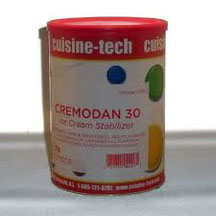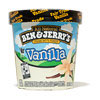The Real Scoop on How to Choose Quality Ice Cream
By Alice Osborne
 It was family reunion time and some of us were in the grocery store staring at the vast array of ice cream choices, trying to figure out which was the very best for our money.
It was family reunion time and some of us were in the grocery store staring at the vast array of ice cream choices, trying to figure out which was the very best for our money.
 Holy cow, only in America do we have all these confusing choices. We finally did choose a few and went on our way. But ever since, I've wondered, can I judge the quality of ice cream without opening the container? The list of ingredients is just confusing. So I went to www.answers.com for, well, my answer. Here's what I found:
Holy cow, only in America do we have all these confusing choices. We finally did choose a few and went on our way. But ever since, I've wondered, can I judge the quality of ice cream without opening the container? The list of ingredients is just confusing. So I went to www.answers.com for, well, my answer. Here's what I found:
 "Quality ice creams have lower overruns (roughly 80 percent) than those of low-quality ice creams (100 percent or more) and therefore justifiably cost more than the substandard products, which - quite literally - are a lot of cold air. [my comment: so we do get what we pay for!]
"Quality ice creams have lower overruns (roughly 80 percent) than those of low-quality ice creams (100 percent or more) and therefore justifiably cost more than the substandard products, which - quite literally - are a lot of cold air. [my comment: so we do get what we pay for!]
 "Many producers use stabilizers like gelatin to help retard the melting speed of high-overrun ice creams. If the stabilizers are used with abandon, the ice cream may melt even more slowly than quality ice cream, though that sight will not hoodwink aficionados. They will spot telltale signs, such as the tiny air bubbles that emerge on the surface as the ice cream melts and the chalkiness or gumminess of its texture. [my comment: YUK.]
"Many producers use stabilizers like gelatin to help retard the melting speed of high-overrun ice creams. If the stabilizers are used with abandon, the ice cream may melt even more slowly than quality ice cream, though that sight will not hoodwink aficionados. They will spot telltale signs, such as the tiny air bubbles that emerge on the surface as the ice cream melts and the chalkiness or gumminess of its texture. [my comment: YUK.]
 We obviously want an ice cream with more cream, not less. And I want one with the fewest mystery ingredients possible. What's wrong with wanting to eat just FOOD - real honest-to-goodness food? So now that I know what I know, this label reading won't be so overwhelming. Thus far, by the way, Edy's Grand Vanilla shows up with a 97 percent overrun, and Ben & Jerry's anything is showing up with the fewest additives and the lowest overrun percentage 24 percent). I'm giving it a try tonight.
We obviously want an ice cream with more cream, not less. And I want one with the fewest mystery ingredients possible. What's wrong with wanting to eat just FOOD - real honest-to-goodness food? So now that I know what I know, this label reading won't be so overwhelming. Thus far, by the way, Edy's Grand Vanilla shows up with a 97 percent overrun, and Ben & Jerry's anything is showing up with the fewest additives and the lowest overrun percentage 24 percent). I'm giving it a try tonight.

